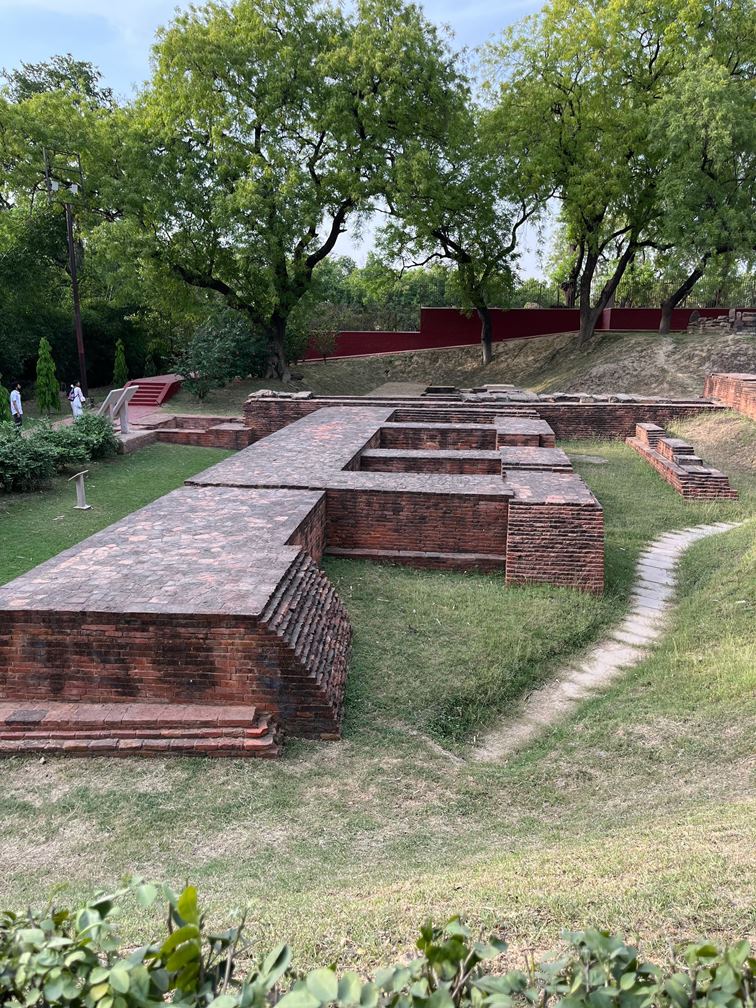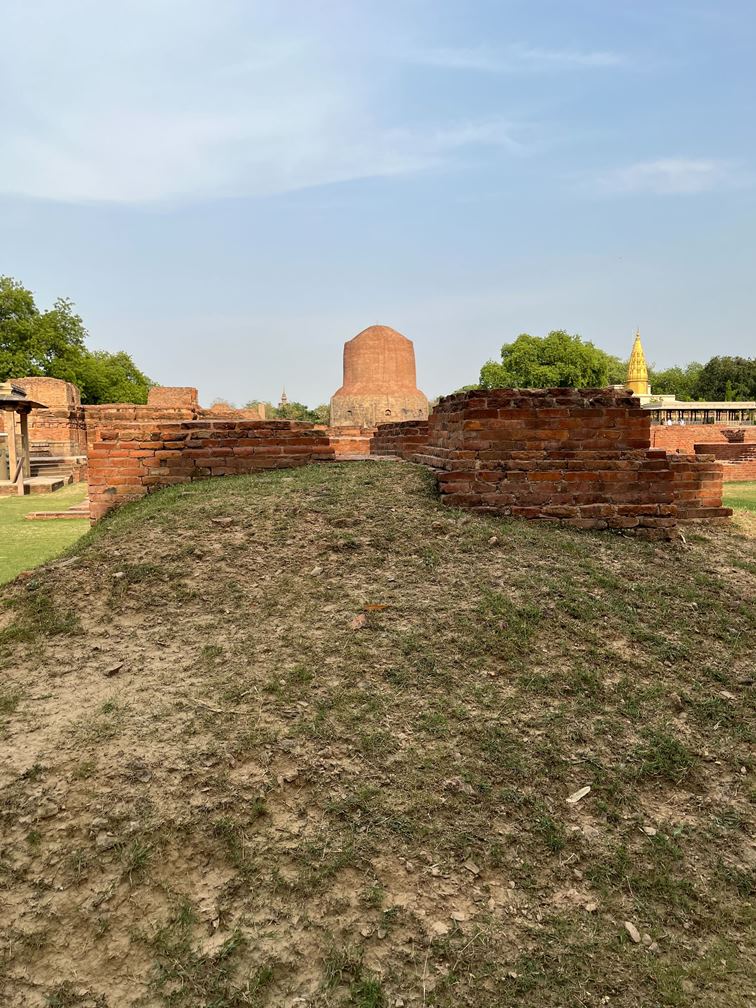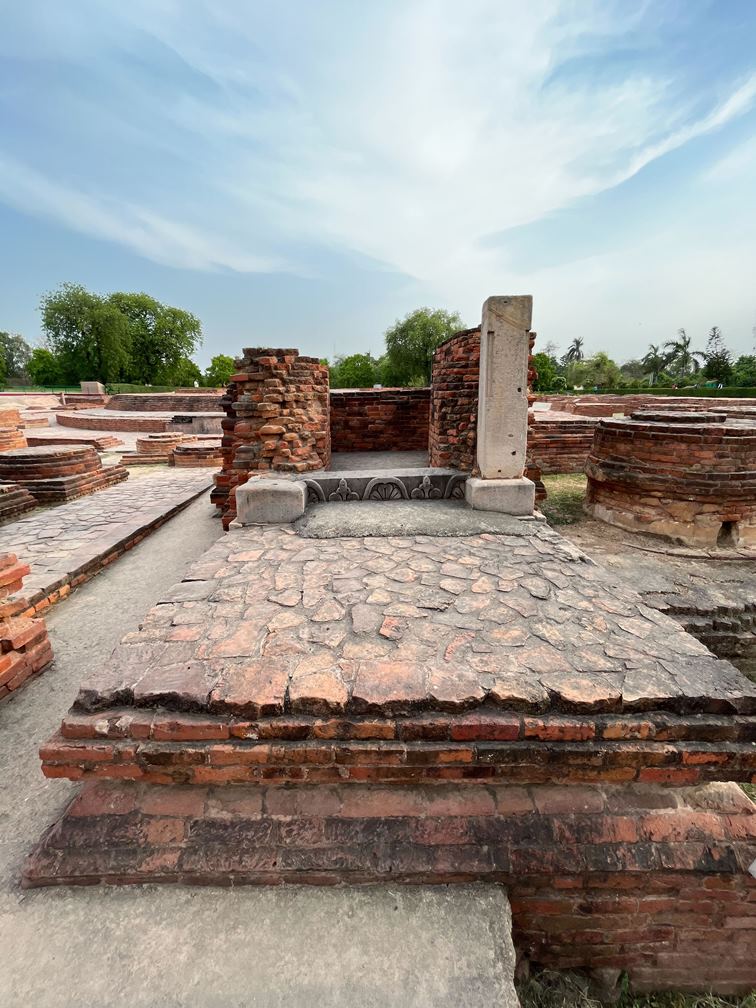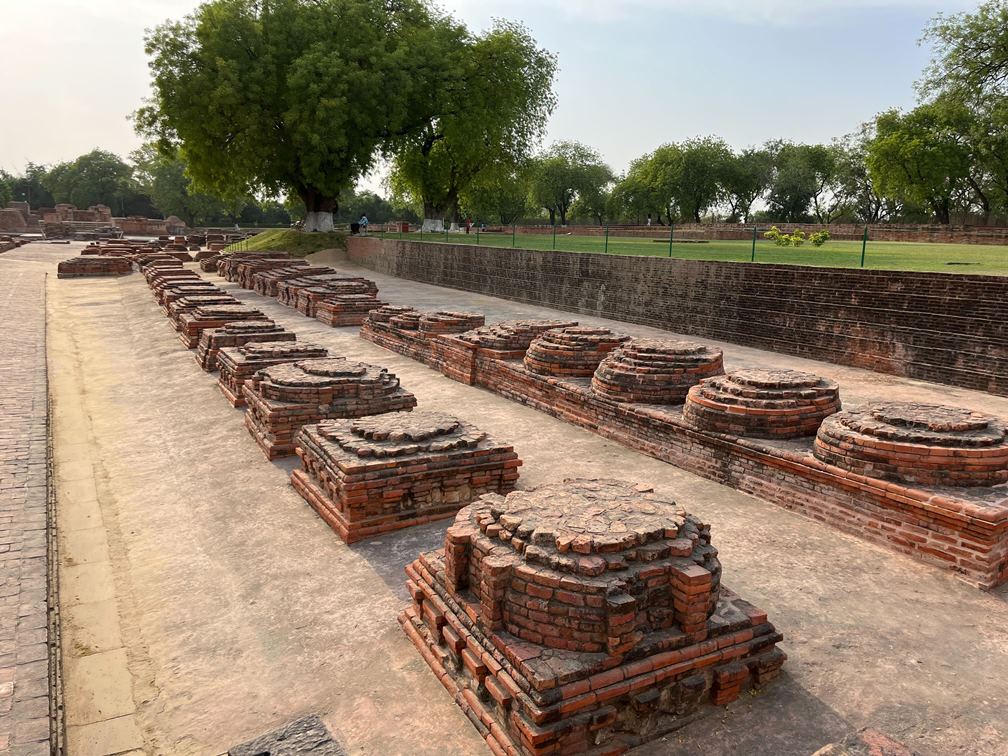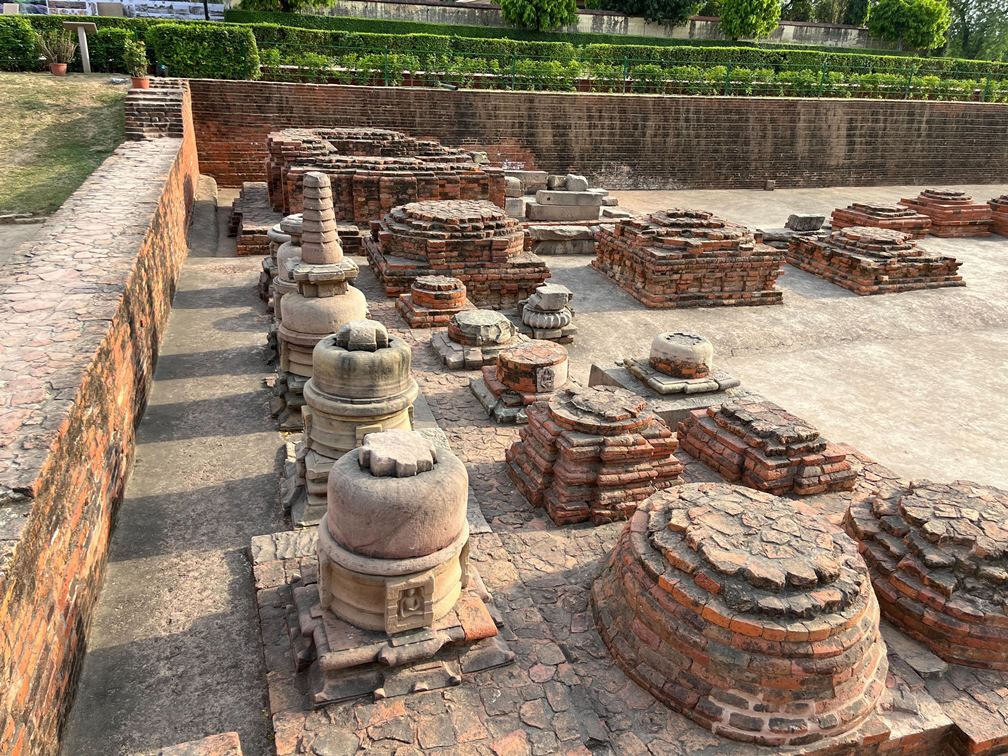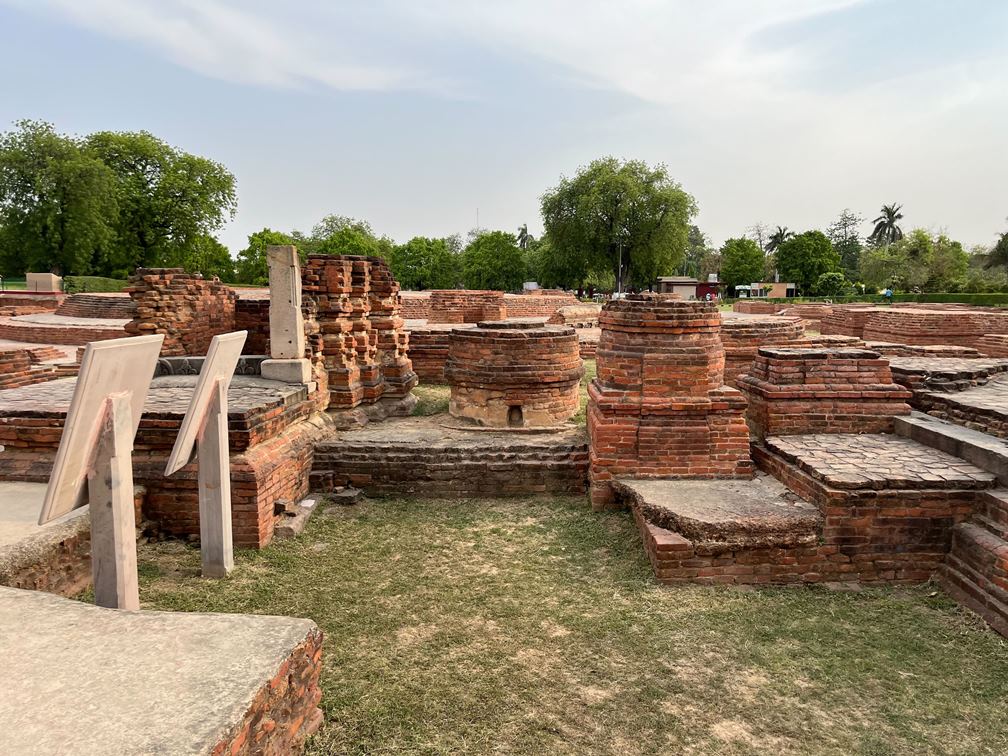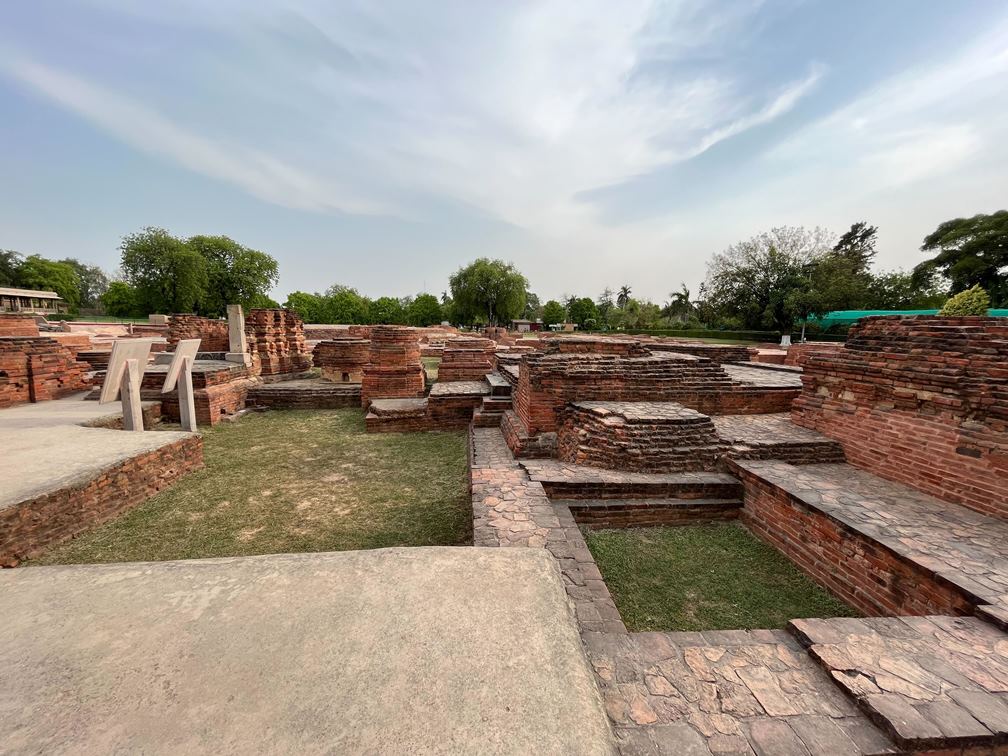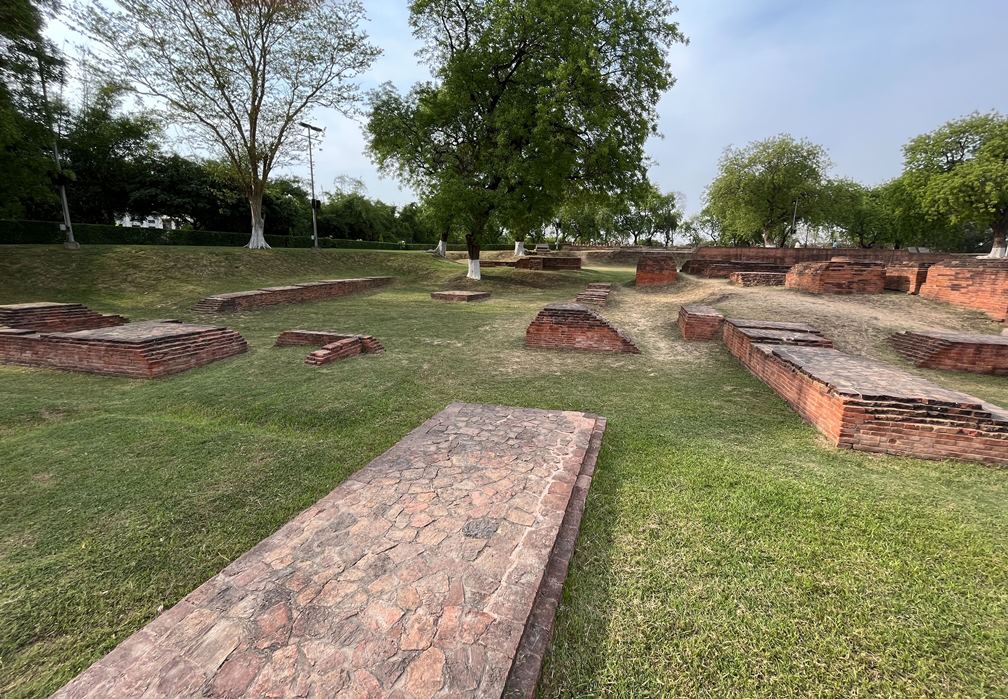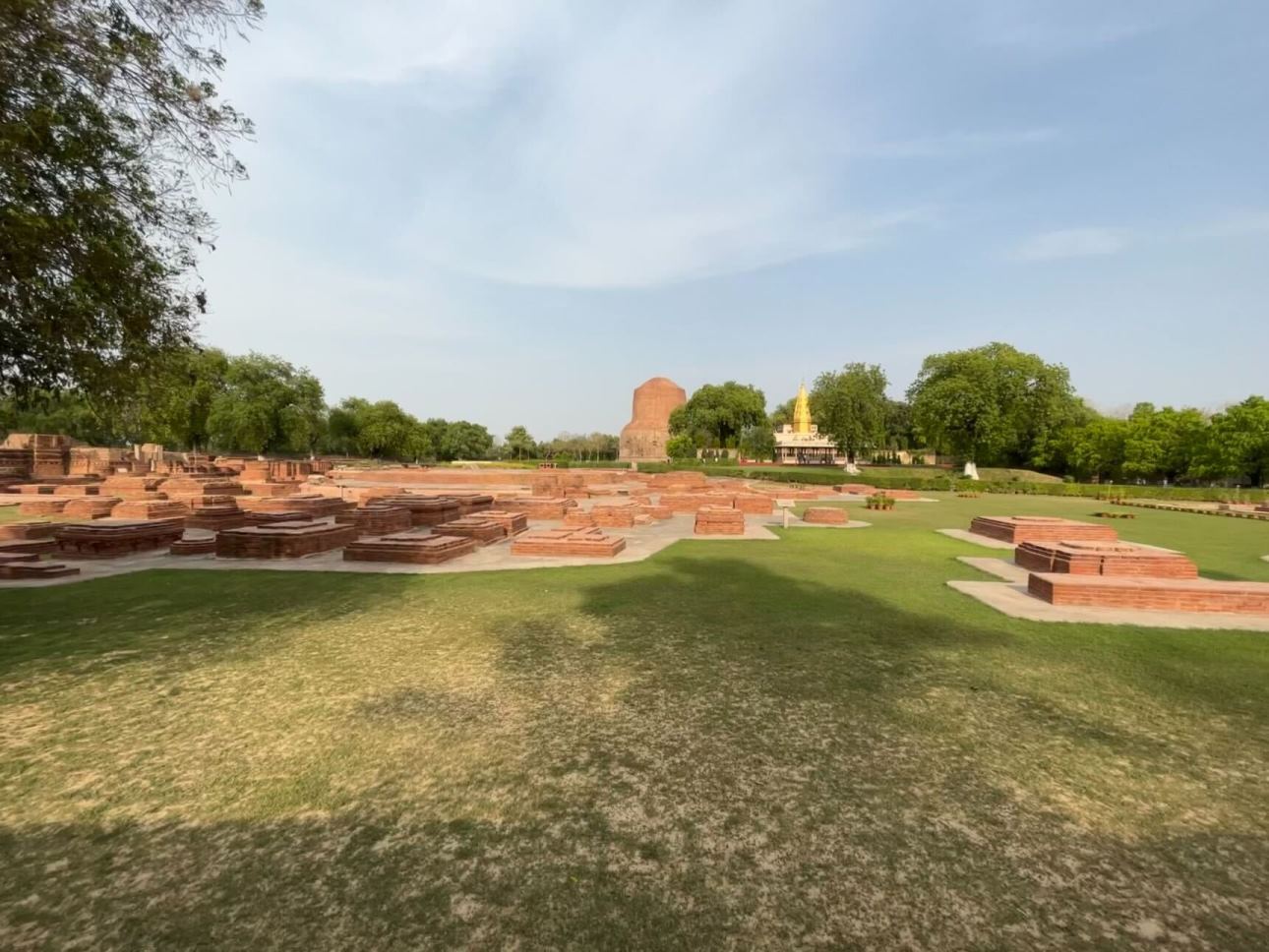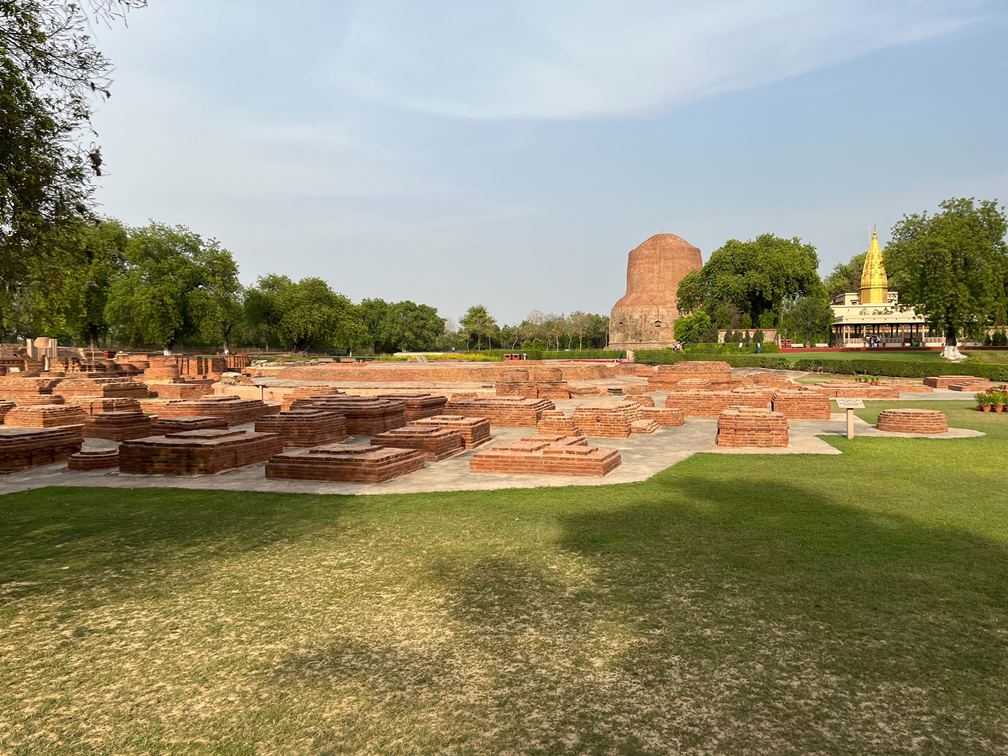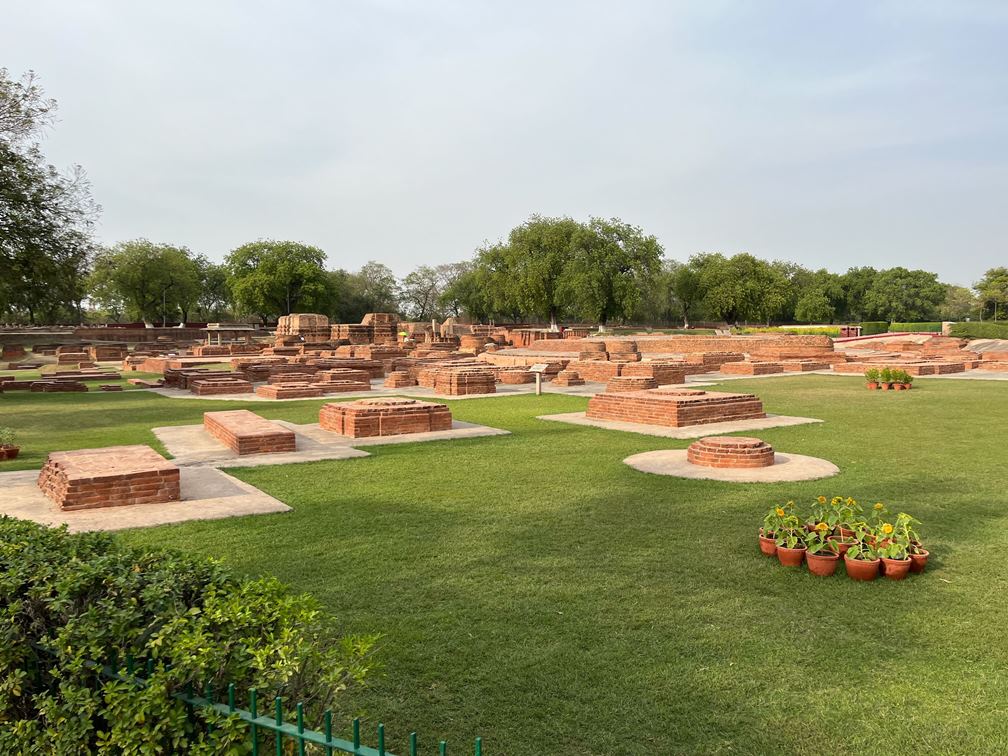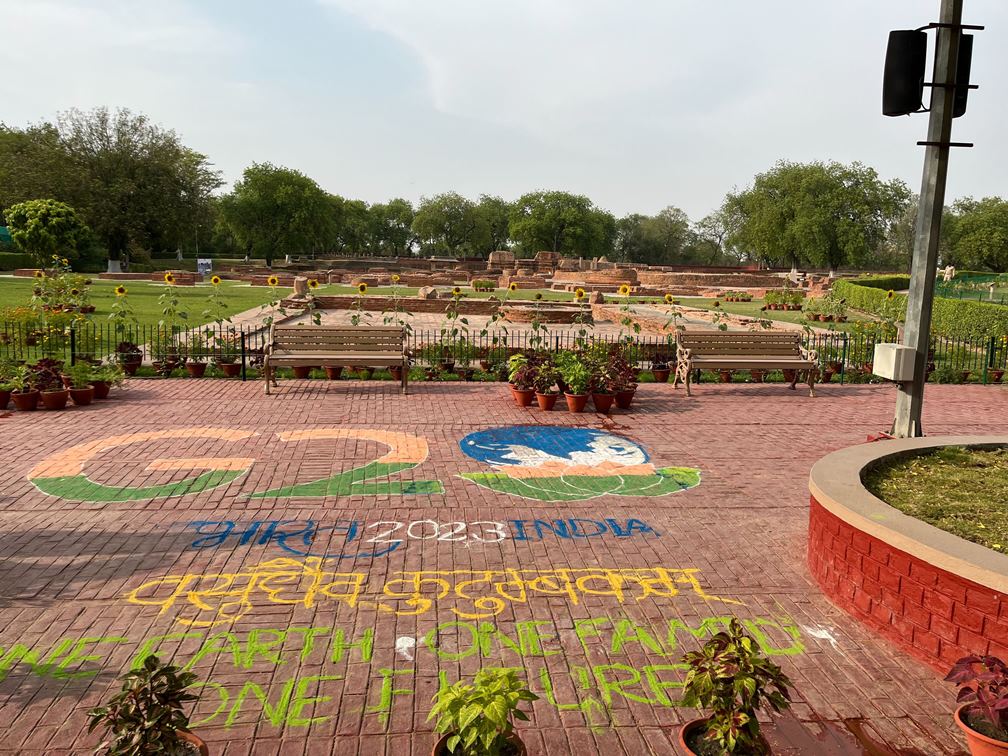Sarnath, Varanasi
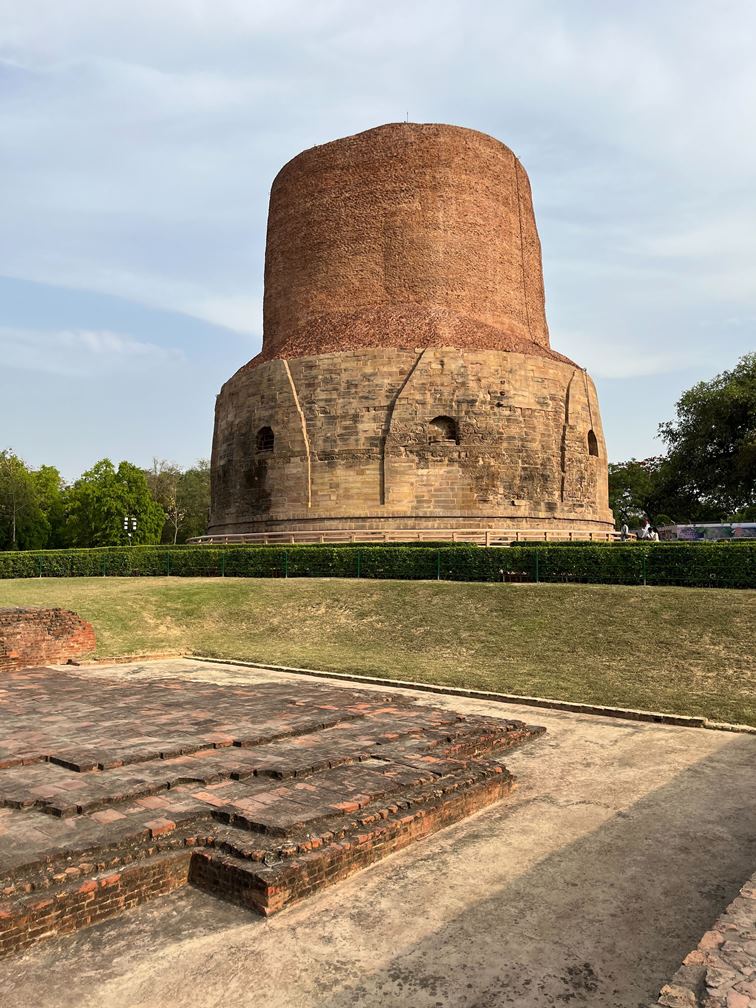
Sarnath is located 10 kilometers from the city of Varanasi, in the Indian state of Uttar Pradesh.
Sarnath is considered one of the holiest places in Buddhism, as it was here that Lord Buddha delivered his first sermon after attaining enlightenment.
Apart from its religious significance, Sarnath is also famous for its archaeological sites, which offer a glimpse into the rich history of ancient India.
History of Sarnath
The History of Sarnath can be traced back to the 6th century BC when Lord Buddha visited the town and delivered his first sermon at the Deer Park, also known as Isipatana.
The Deer Park was a favorite spot for Buddhist monks to meditate and discuss the teachings of Lord Buddha.
” It was here in Sarnath that the Buddha preached the Four Noble Truths and the Eightfold Path, which became the foundation of Buddhism. “
After the Buddha’s death, Sarnath became an important center for Buddhist pilgrimage, attracting monks and followers from all over India and beyond.
It was during the Mauryan period in the 3rd century BC that Emperor Ashoka, a fervent follower of Buddhism, built a number of monuments and structures in Sarnath, including the famous Ashoka Pillar. The pillar bears inscriptions in Brahmi script that describe his conversion to Buddhism and his efforts to promote the religion.
During the Gupta period in the 5th and 6th centuries AD, Sarnath witnessed a resurgence of Buddhist activity. The Dhamek Stupa, one of the most significant monuments in Sarnath, was likely built during this period. The stupa is a massive cylindrical tower that stands 43 meters high and is covered in intricately carved stone reliefs.
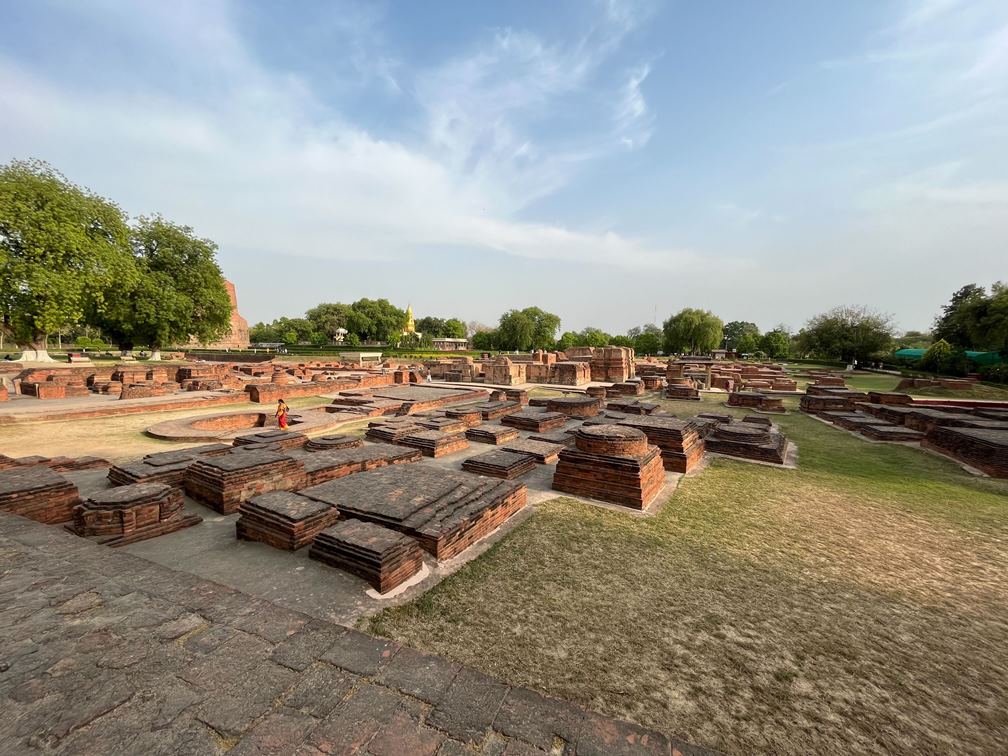
After the decline of Buddhism in India, Sarnath was abandoned and lay in ruins for centuries. It was only in the 19th century that British archaeologists rediscovered the site and began excavating and restoring the ancient monuments. Today, Sarnath is a UNESCO World Heritage Site and a popular destination for Buddhist pilgrims and tourists.
Archaeological Sites in Sarnath:
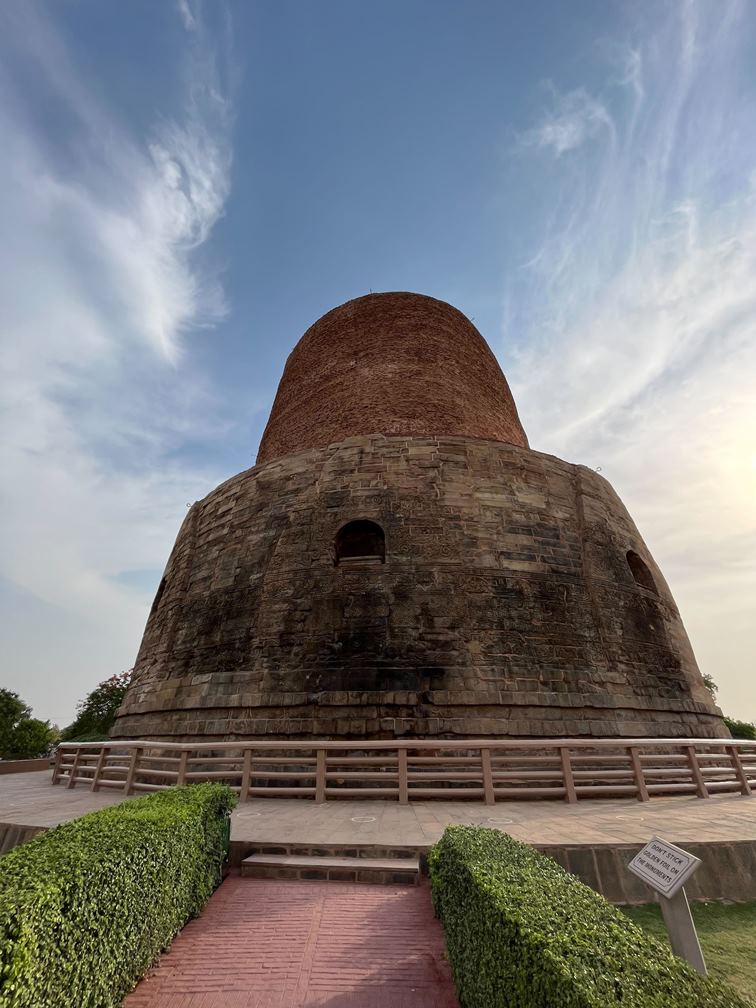
Dhamek Stupa:
The Dhamek Stupa is the most significant monument in Sarnath. It is a massive cylindrical tower that stands 43 meters high and is covered in intricately carved stone reliefs.
Chaukhandi Stupa:
The Chaukhandi Stupa is an ancient Buddhist stupa that dates back to the 3rd century BC. It is believed to have been built by Emperor Ashoka to mark the spot where he met the Buddha for the first time.
Ashoka Pillar:
The Ashoka Pillar is an important historical artifact located at Sarnath. This pillar was built by Emperor Ashoka in the 3rd century BC and bears inscriptions in Brahmi script that describe his conversion to Buddhism.
Mulagandha Kuti Vihar:
The Mulagandha Kuti Vihar is a modern Buddhist temple located in Sarnath. It is a beautiful temple that houses a large statue of Lord Buddha and offers a serene environment for meditation.
Archaeological Museum:
The Archaeological Museum at Sarnath is a must-visit for anyone interested in Indian history and archaeology. The museum houses a vast collection of artifacts from the site and other Buddhist sites in the region, including ancient sculptures, coins, and inscriptions.
Sarnath is a place of immense historical and religious significance. It is a testimony to the rich cultural heritage of India and the spread of Buddhism across Asia. The ancient monuments and structures in Sarnath are a reminder of the glorious past of India and the enduring legacy of Lord Buddha’s teachings. A visit to Sarnath is a must for
Sarnath is considered one of the holiest places in Buddhism, as it was here that Lord Buddha delivered his first sermon after attaining enlightenment.
Why Choose Kashi Yatra as Your Preferred Varanasi Tour Planner ?
- Experienced and Professional Team of Tour Planner in Varanasi
- Transparent Pricing & 24/7 Availability
- Tieups with Hotels & Cabs - Due to Which we provide smooth service to you.
- Easy Online Booking : You can easily plan your Kashi yatra from any part of the world. You can also pay us online to book your service.



